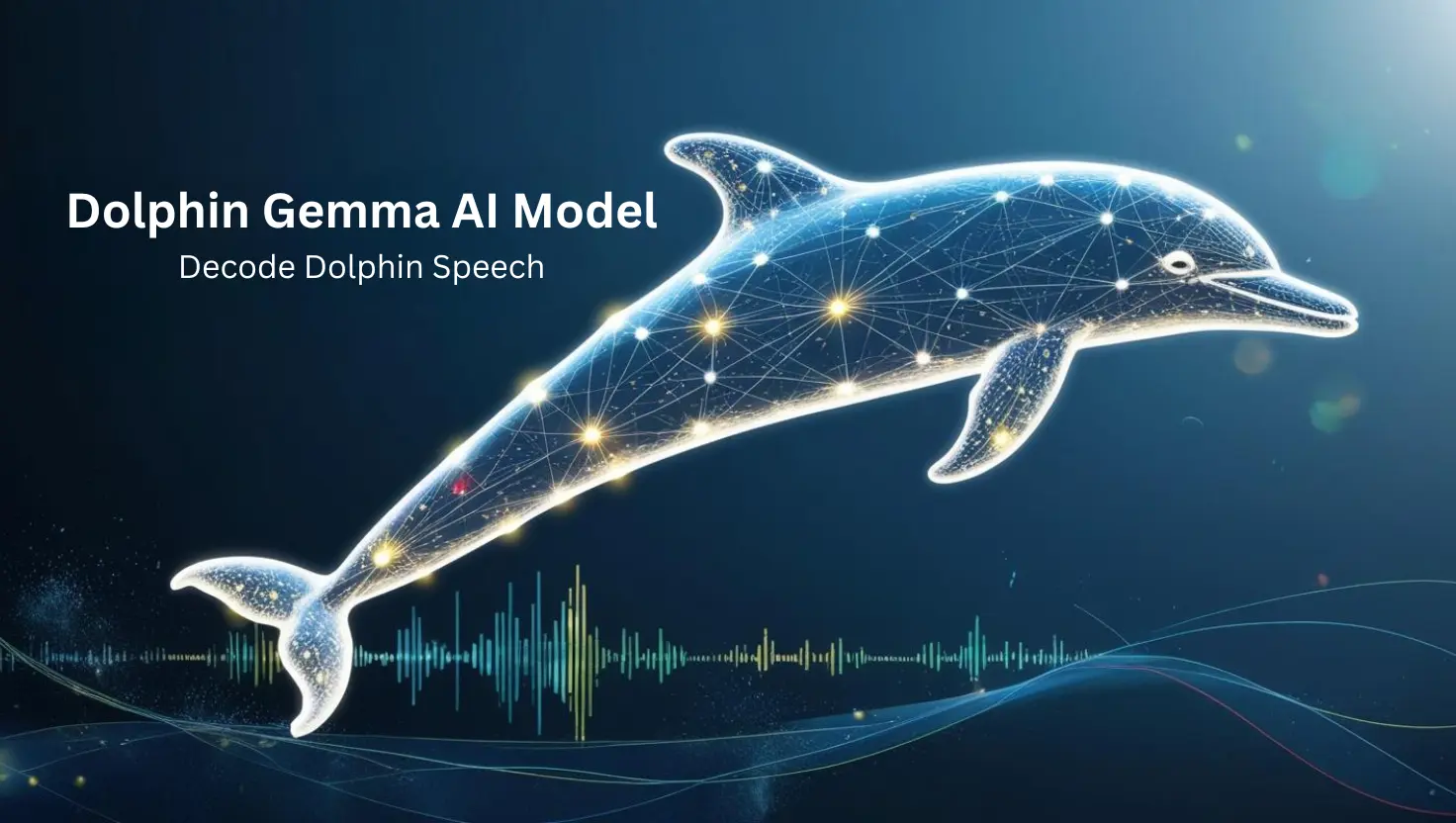Dolphins are renowned for their intelligence and complex social behaviors, but their vocalizations—ranging from signature whistles to burst‑pulse sounds—have long eluded human understanding. Enter the Dolphin Gemma AI model, Google’s pioneering effort to bridge the communication gap between humans and dolphins using a purpose‑built large language model designed for audio sequences. In this article, we’ll dive into the technology behind this landmark project, explore its real‑world applications, and discuss how Google’s open‑source ethos accelerates discoveries in marine biology and AI research.
What Is the Dolphin Gemma AI Model?
The Dolphin Gemma AI model—also known simply as Dolphin Gemma—is the first large language model (LLM) created specifically to understand and generate dolphin vocalizations. Based on the foundational technology of Google’s Gemma series and Gemini chatbot architecture, Dolphin Gemma treats dolphin sounds as audio‑token sequences, much like words or tokens in human language models. Trained on over 40 years of acoustic data from the Wild Dolphin Project’s Atlantic spotted dolphins, it can predict subsequent sound patterns with remarkable accuracy, uncovering structures and relationships that manual spectrogram analysis might miss.
How Dolphin Gemma Works
Audio Tokenization with SoundStream
At the core of Dolphin Gemma lies Google’s SoundStream tokenizer, which converts raw underwater recordings into discrete tokens. This process:
- Captures frequency and temporal features of whistles, clicks, and burst pulses
- Reduces data complexity by representing continuous waveforms as a sequence of tokens
- Enables sequence modeling analogous to next‑word prediction in text‑based LLMs.
Model Architecture and Size
Dolphin Gemma is roughly a 400 million‑parameter model—lightweight enough to run efficiently on Google Pixel phones yet powerful enough to model the nuances of dolphin speech. Its architecture mirrors the Gemma series:
- A stack of transformer layers optimized for audio
- Causal attention to predict the next token in a sequence
- Fine‑tuning on specialized datasets for domain‑specific performance.
Sequence Prediction and Synthesis
Once trained, Dolphin Gemma can:
- Analyze live recordings, identifying the most probable next sound.
- Generate synthetic vocalizations that mirror natural dolphin patterns.
- Cluster recurring sequences to suggest potential ‘words’ or calls linked to behaviors.
This audio‑in, audio‑out approach opens a new frontier in marine communication research, offering insights previously hidden in spectrograms and manual annotations blog.google.
Applications of the Google Dolphin Gemma
Accelerating Field Research
Researchers at the Wild Dolphin Project (WDP) have already begun deploying Dolphin Gemma this field season. By running the model on Google Pixel 9 smartphones—upgraded from the Pixel 6—the team can process both deep‑learning inference and template‑matching algorithms in real time during expeditions. This enables:
- Faster identification of signature whistles linked to individual dolphins
- Immediate feedback through bone‑conduction headphones for two‑way interaction
- Reduced reliance on power‑hungry custom hardware, thanks to off‑the‑shelf phones.
Building a Shared Vocabulary
Beyond passive analysis, Dolphin Gemma supports the CHAT (Cetacean Hearing Augmentation Telemetry) system—a wearable underwater interface developed with Georgia Tech. The process involves:
- Associating synthetic whistles with specific objects or actions (e.g., playing with a toy)
- Teaching dolphins to mimic these sounds through reinforcement
- Using DolphinGemma’s predictions to interpret requests and strengthen two‑way communication
Over time, researchers hope to build a shared lexicon, allowing humans and dolphins to exchange rudimentary messages in situ New Atlas.
Insights into Dolphin Culture and Cognition
If dolphins indeed have structured language and culture, Dolphin Gemma could reveal:
- Contextual meanings behind different whistles and burst pulses
- Social hierarchies and relationships based on signature call usage
- Behavioral triggers, such as mating calls or danger alerts
Such discoveries could transform our understanding of non‑human intelligence and inform conservation strategies for these charismatic marine mammals.
Collaborations and Open‑Source Release
Google’s approach emphasizes scientific collaboration and open innovation. After initial field deployments, Dolphin Gemma AI model will be released as an open‑source AI model around mid‑2025, enabling:
- Fine‑tuning for other cetacean species (e.g., bottlenose or spinner dolphins)
- Cross‑disciplinary research in bioacoustics, AI ethics, and animal cognition
- Development of new tools for wildlife conservation, environmental monitoring, and educational outreach
By sharing both the model weights and training code, Google hopes to democratize access to advanced audio LLMs, fostering global research initiatives.
Frequently Asked Questions
Q: What makes Dolphin Gemma different from other Gemma AI models?
A: Unlike standard text‑based LLMs, DolphinGemma processes audio tokens representing natural dolphin sounds, enabling true sequence prediction and synthesis in the marine bioacoustics domain.
Q: Can Dolphin Gemma translate dolphin whistles into human language?
A: Not directly. Instead of word‑for‑word translation, DolphinGemma uncovers patterns and structures, laying the groundwork for a shared vocabulary rather than literal translation.
Q: How can researchers access Dolphin Gemma AI model?
A: Google plans to publish the model weights and training scripts under an open‑source license in mid‑2025, allowing anyone with acoustic datasets to fine‑tune the model for new species or behaviors.
Conclusion:
The Dolphin Gemma AI model represents a monumental step toward interspecies communication, combining decades of marine biology research with state‑of‑the‑art AI technology. From real‑time field deployments on Pixel phones to open‑source releases that empower researchers worldwide, DolphinGemma exemplifies how AI can illuminate the hidden languages of nature.
Discover the latest breakthroughs in artificial intelligence—explore our blog today and stay at the forefront of innovation!

